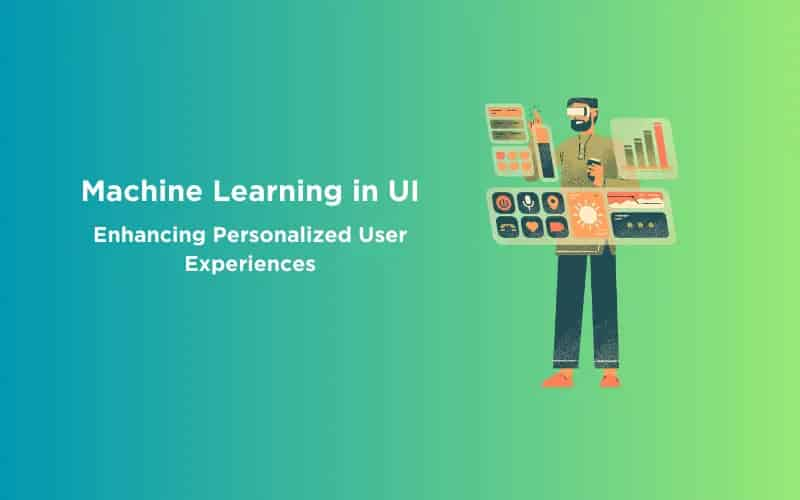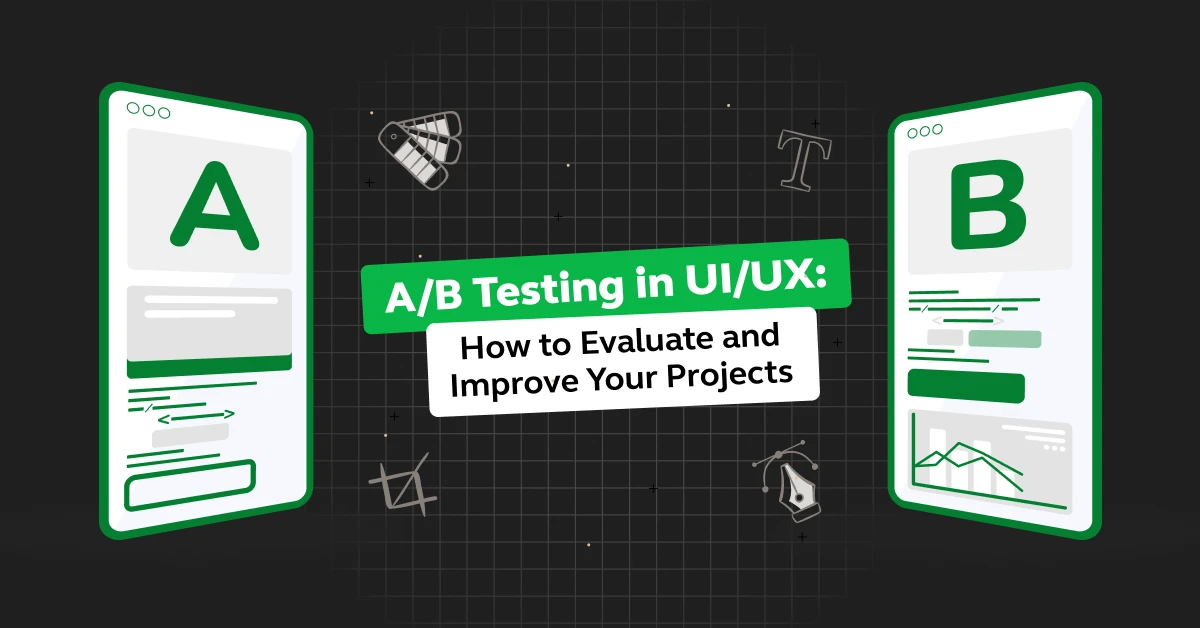
Machine Learning in UI: Enhancing Personalized User Experiences in 8 Ways
Oct 10, 2025 4 Min Read 4240 Views
(Last Updated)
In today’s digital era, delivering a lasting and personalized user experience is crucial for businesses to thrive. With information at our fingertips and fierce corporate competition, the difference between a returning client and one who never returns can be substantial.
This is where the power of machine learning shines, revolutionizing the understanding of user experience (UX) design. In this article, we will explore how machine learning in UI can be utilized to improve user experiences, specifically focusing on its application in UI (User Interface) design.
Table of contents
- What is Machine Learning?
- Popular Types of Machine Learning Algorithms
- How Machine Learning in UI Enhances Personalized User Experiences
- User Behavior Analysis
- Dynamic Website Personalization
- Customer Journey Mapping
- User Segmentation Strategies
- Predictive User Experience
- A/B Testing and Machine Learning
- Enhancing Customer Support
- Tailoring Email Campaigns
- Concluding Thoughts...
- FAQs
- How to use machine learning for personalization?
- What is machine learning in UX?
- What is personalization in machine learning?
- What is personalization in UX design?
What is Machine Learning?
Machine learning is the art of empowering computers to imitate human smarts by honing their skills on hefty datasets. It involves giving computers access to a treasure trove of information and trends, enabling them to learn and anticipate future data patterns.
Machine learning algorithms excel at unraveling perplexing patterns and improving their efficiency over time, much like how humans absorb knowledge through real-life encounters and adjust to unfamiliar scenarios.
Essentially, machine learning harnesses information-inspired revelations to recreate certain facets of human intellect within digital constructs.
Make sure you understand machine learning fundamentals like Python, SQL, deep learning, data cleaning, and cloud services before we explore them in the next section. You should consider joining HCL GUVI’s Machine Learning Course, which covers tools like Pyspark API, Natural Language Processing, and many more and helps you get hands-on experience by building real-time projects.
Also, if you want to explore Artificial Intelligence and Machine Learning through a Self-paced course, try HCL GUVI’s Artificial Intelligence Course
Learn More: Machine Learning Must-Knows: Reliable Models and Techniques
Popular Types of Machine Learning Algorithms
Machine learning algorithms can be broadly categorized into three popular types:
- Supervised Learning: In supervised learning, the algorithm is trained on labeled data, learning to translate input data into the proper output based on the examples presented.
- Unsupervised Learning: Unsupervised learning involves training algorithms using unlabelled data to identify hidden patterns or structures in the data.
- Reinforcement Learning: Reinforcement learning entails teaching computers to make consecutive judgments in exchange for incentives or punishments.
The machine learning process includes data collection, pre-processing, feature extraction, model training, model assessment, and deployment. The quality and quantity of data are crucial aspects of a machine learning model’s success.
Must Explore: Supervised and Unsupervised Learning: Explained with detailed categorization
How Machine Learning in UI Enhances Personalized User Experiences
Machine learning offers numerous ways to enhance personalized user experiences in UI design. Let’s explore some of the key areas where machine learning algorithms can make a significant impact.
1. User Behavior Analysis
Understanding user behavior is the cornerstone of creating personalized experiences. Traditional methods often involve collecting data and manually analyzing it, which can be time-consuming and may miss critical insights.
Machine learning algorithms, on the other hand, excel at this task. They can evaluate large amounts of data in real time, discovering patterns and trends that may go unnoticed by humans.
By analyzing user behavior data, businesses can acquire a thorough insight into their consumers’ interests and behaviors. This knowledge is crucial for adapting the UI to meet their requirements and preferences.
Also Explore: User Flow in UX Design: 11 Important Steps to Look After
2. Dynamic Website Personalization
Gone are the days of one-size-fits-all websites. Users today expect information and experiences that are tailored to their interests. This is where dynamic website personalization comes into play, with machine learning playing a crucial role in making it happen.
Machine learning algorithms can leverage insights from user behavior analysis to dynamically modify the content and appearance of a website in real time.
For example, if a user frequently clicks on technology-related stories, the website can prioritize tech-related information in their feed. This level of customization not only improves the user experience but also boosts conversion rates and customer satisfaction.
The beauty of machine learning lies in its ability to adjust in real time. As users engage with a platform, machine learning algorithms can continually update their understanding of user preferences and behavior.
This means that the user experience can become increasingly personalized the more a user engages with the brand, fostering loyalty and long-term relationships.
Also Read: UI/UX Best Practices: Creating Exceptional Digital Experiences
3. Customer Journey Mapping
Understanding the customer journey is crucial for creating personalized experiences. Customer journey mapping involves visualizing every touchpoint a customer has with a brand, from initial awareness to post-purchase support.
Machine learning can enhance this process by identifying key touchpoints and predicting how users are likely to move through the journey.
By analyzing historical data, machine learning algorithms can help businesses anticipate when and where customers might encounter pain points or drop off the journey.
This enables proactive adjustments to be made, ensuring a smoother and more personalized experience for users.
Find Out Top 10 UI Design Patterns: Creating Intuitive and Engaging User Experiences
4. User Segmentation Strategies
User segmentation is the practice of dividing a user base into distinct groups based on shared characteristics or behaviors.
Traditional segmentation methods often rely on basic demographics, but machine learning takes it to another level. Machine learning algorithms can identify subtle patterns in user behavior that might go unnoticed using manual methods.
For example, they can identify that a group of users frequently visits the website during lunch breaks and tailor content accordingly. This level of granularity ensures that each segment receives an experience that resonates with their unique preferences.
Also Read: Impact of Loading Time on User Experience [2024]
5. Predictive User Experience
Personalization is taken to a whole new level with predictive user experience. It’s about predicting what a user wants before they even realize it.
Based on historical data and real-time interactions, machine learning algorithms can anticipate user behavior. For example, if a user begins searching for hiking boots, a predictive algorithm can suggest hiking socks or outdoor gear ahead of time.
This predictive approach not only enhances user satisfaction but also boosts cross-selling and upselling opportunities, driving revenue growth.
Find Out The Role of AI in Predictive User Interface Design
6. A/B Testing and Machine Learning
A/B testing is a widespread practice in UI design that compares two versions of a web page or application to see which performs better. Machine learning can improve this process by automatically altering design components based on user data.
For example, in an A/B test to identify the optimal color for a “Buy Now” button, a machine learning algorithm may dynamically modify the button’s color for various users based on their preferences, resulting in improved conversion rates.
Also Read: A/B Testing in UI/UX: How to Evaluate and Improve Your Projects?
7. Enhancing Customer Support
Customer support interactions offer a valuable opportunity for personalization. Machine learning algorithms can process customer queries and past interactions to provide tailored responses and solutions.
This not only increases customer care productivity but also improves the user experience by addressing concerns in a customized manner.
Furthermore, machine learning-powered chatbots can replicate human-like dialogues, making interactions more natural and engaging.
Know About Real-World Machine Learning Applications
8. Tailoring Email Campaigns
Email marketing remains a potent tool for engaging customers. By integrating machine learning, businesses can personalize email campaigns to a recipient’s preferences, leading to higher open rates and click-through rates.
Machine learning algorithms analyze user behavior, such as past interactions and browsing history, to craft emails that align with the recipient’s interests. This level of personalization can significantly impact the effectiveness of email marketing efforts.
While the benefits of leveraging machine learning for personalized user experiences are immense, it’s essential to address privacy concerns and ethical considerations.
Gathering and using user data for personalization must be done transparently and with user consent. Moreover, businesses must ensure that data is handled securely and in compliance with data protection regulations to protect user privacy.
Also Explore: Top 10 Machine Learning Applications You Should Know
Kickstart your Machine Learning journey by enrolling in HCL GUVI’s Machine Learning Course where you will master technologies like matplotlib, pandas, SQL, NLP, and deep learning, and build interesting real-life UI/UX projects.
Alternatively, if you want to explore Artificial Intelligence and Machine Learning through a Self-paced course, try HCL GUVI’s Artificial Intelligence Course.
Concluding Thoughts…
In conclusion, machine learning has the power to revolutionize user experiences in UI design. By leveraging user behavior analysis businesses can exceed customer expectations and drive engagement, loyalty, and financial success.
It is crucial, however, to approach the use of machine learning in UI design with responsibility, ensuring user privacy and transparency.
As technology advances, the possibilities for personalization are endless. Businesses that effectively harness the power of machine learning in UI design will undoubtedly prosper in the digital age.
Read More: The Future and Scope of Machine Learning Careers in the New Era
FAQs
Utilize machine learning algorithms to analyze user behavior and preferences, enabling tailored content or recommendations based on individual user data. Read the article above to find out more.
Machine learning in UX involves employing algorithms to enhance user experience by analyzing user interactions and providing personalized, user-specific recommendations or features.
Personalization in machine learning refers to the customization of content, services, or recommendations based on individual user data and behavior, optimizing user experience.
Personalization in UX design involves tailoring user interfaces, content, and features to meet individual user preferences, creating a more engaging and user-centric experience.























Did you enjoy this article?